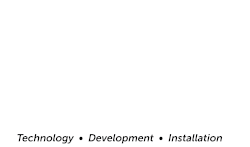
By Ray Saka, Sales Manager, TMEIC
Why efficiency is so important to solar
Power conversion efficiency has certainly been a very popular topic in solar industry. PV inverter manufacturers have invested significant amount of effort to achieve even a 0.1% higher efficiency year over year. But just how important is efficiency to a solar system?
The U.S. installed more than 7 GW of solar in 2014. Every single installation required some type of power conversion from DC (solar panel) to AC (grid). To simplify the discussion, if we assume 98% efficiency for the inverter loss, that equals about 6.86 GW of AC power generated. If all the inverters performed at 99% power conversion efficiency, and all else being equal, that number would be 6.93 GW. That is a 70-MW difference and equivalent to a large utility-scale PV plant! Higher efficiency equates to more energy harvest and is therefore critically attributed to the total revenue stream of the PV system.
Reaching 99% conversion efficiency
The PV inverter is a complex piece of equipment made up of thousands of components. Roughly 80% of losses come from a switching device and AC inductors. One of the most critical components within PV inverter is this “switching device” or semiconductor device being used to perform DC to AC conversion. Historically, the solar industry has relied on an IGBT (Insulated Gate Bi-polar Transistor) for this device. The IGBT is the heart of the PV inverter where power conversion really takes place.
PV inverter manufacturers have provided innovative solutions in the configuration methodology of IGBT, but one of the most innovative solutions is advanced NPS (Neutral Point Switch) 3-level topology. Conventional PV inverter technology typically uses a 2-level inverter system with a lower number count of IGBTs. The 3-level power conversion incorporates at least twice the number of IGBTs distributing power stress among individual devices. In fact, the total loss of IGBT and AC inductor in 2-level topology inverter ranges from 80% to about 85%, while the 3-level topology inverter is able to achieve 75% to 80%.
Additionally, NPS 3-level topology is able to achieve better power quality due to its unique switching characteristics. This allows reducing AC inductor size by half. This 50% reduction would also mean reducing the total inductor ohmic loss, and also 50% reduction in core-loss as constant loss attributes to significant improvement in efficiency at lower load conditions. Lower stress on individual IGBTs and reduction in AC inductor size inevitably equates to lower total losses contributing to an increase in efficiency and reliability.

All inverters need cooling because a significant amount of heat is exhausted out of PV inverters, especially in large utility-scale central inverters. Most large PV inverters size range from 1 MW to 1.9 MW, and the amount of heat directly correlates with conversion efficiency. For an example, a 1-MW inverter with a 98% conversion efficiency equates to about 20 kW of heat. That is enough heat to comfortably warm 10 homes! In essence, as we achieve higher efficiency less heat is required to be exhausted out of the inverter, therefore requiring a simpler cooling system. Some of the recent advancement in the inverter cooling system, such as an advanced hybrid cooling solution, requires significantly less air-flow in the system without an auxiliary fan power load. This lower load condition allows the inverter to further increase conversion efficiency.
IGBT design and the cooling system are two of the most important aspects in achieving 99% inverter conversion efficiency. They are also intimately related. Inefficient IGBT design will result in lower efficiency with higher heat exhaust. This in turn, will require more complex and/or a higher air-speed cooling system. Technology optimization in the switching device and cooling system is key to entering the next era of PV inverter efficiency, beyond 99%.





Hello, there’s an error here:
“In fact, the total loss of IGBT and AC inductor in 2-level topology inverter ranges from 80% to about 85%, while the 3-level topology inverter is able to achieve 75% to 80%.”
The percentages are flipped. It should be the 3-level inverter that has the higher efficiency percentages.
I’ve gone through your findings and it is good, well written but i would like to know how you have calculated the losses of the converter. There is one more concern is that is there any of transformer present in the circuit.